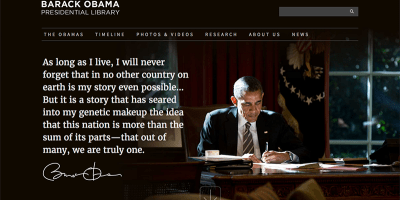
LinkedIn Chat on Digital Transformation in Government

In March, Acquia held a week-long morning LinkedIn live chat series with partners, clients, innovators and industry leaders on digital services in the public sector.
There were plenty of opinions from all sides as participants engaged in inspired conversation and debate on the ever-so-timely topics of government and technology. Five days, five questions, plus a bonus question! In case you couldn’t participate, we have you covered. Here’s the recap:
Q1: What does digital transformation mean for the public sector?
One participant commented, “My personal view on digital transformation is when it allows the public sector to become an environment where workplace tools are simple, responsive and easy for civil servants to work effectively. It is only when organisations have a solid grasp of the user experience and its impact that meaningful decisions on digital transformation can be made.”
Another contributor noted, “Digital transformation in any sector, but more so in the public sector means first and foremost shifting the mindset from “take it or leave it” to ‘human service’...before diving head first into the pool of digital tools, platforms and ata, first define who you’re serving and why, what they need, how the people you serve best consume information. So long as public sector organs remain in the ‘take it or leave it’ frame of mind, they are likely to fall into the trap of adopting trendy ‘tech for the sake of tech’ without looking at the bigger picture and planning for the longer run.”
Q2: More than 50% of governments are experiencing slow progress in the process of digitization. Why do you think this is? What does 'good' look like'?
“I don't think we can get away from the leadership issue here. GDS in the UK was a catalyst for the first wave of digital transformation in the UK public sector. It has its fans and also many detractors. Most would agree though that it started well, but that it has become ever less effective since. Some would now question its role entirely. Whether you are a fan of the kind of central control that GDS exerted in its early days, or not, there appears to be little in the way of control or leadership or indeed senior cabinet level drive behind digital transformation in the UK right now — even without the massive distraction that is Brexit. Is it any wonder that progress has slowed?”
Continuing on this theme, another participant writes, “What is lacking is a coherent statement of the problems that digitisation is trying to solve - if the aim is to have more engaged, included, empowered citizens who feel that government works for them rather than being done to them, then we are a long way away from achieving that goal — if the aim is just to go paperless, the benefits don't outweigh the costs - hence that lack of progress. Also what is needed is a ministerial level champion — the closest thing we have is Matt the App Hancock, but he is currently wading through treacle at the NHS.”
Q3. How should local authorities improve their web presence for consumers?
On this topic, participants pointed to a need for local authorities to better understand the technology needs of their communities and design tools that are accessible, relevant, and culturally inclusive.
“Local authorities need to think about the user and the experience and get away from more "traditional" ways of the web. User research is critical before any tech gets introduced. The outcome of which is a clear set of user journeys against which concepts such as information architecture, usability, content and channels come into play. This approach also helps local authorities tackle the immense challenges around ever more diverse communities — not just from a cultural point of view but also generational, all of which need to be considered to ensure an inclusive and accessible web presence is delivered. Online communities also have a place for helping citizens get better connected to local services and also each other. Lest we forget that local authorities are community-oriented service providers.”
“By focusing on who the 'consumers' are and what it is they want to do - I want to look at my Council Tax account, find out when the bins are emptied, where the recycling centres are and how to renew my parking permit — all of which I can do online but it is a struggle to find out exactly where they all are as they are usually organised by local authority departments or function rather than being easily accessible.”
Q4. What is the No. 1 benefit of moving to the cloud for public sector organizations?
In a well-thought-out response, a participant outlines his view of the top three benefits in the value of cloud-based technologies in modernizing public services:
“Great question. There are numerous benefits — financial, technological, operational etc. For me, my top three are:
1. Modernisation - First and foremost, the cloud provides public sector organisations with the opportunity to reduce technical debt and modernise systems. This also includes modernising IT Operations through models such as ITOps, DevOps and SecOps; as well as introducing modern technologies such as AI, RPA, IOT, and other data-driven capabilities to modernise and transform public services.
2. Consolidation - Migrating to the cloud is not always easy but what it does enable public sector organisations to do is consolidate and standardise legacy systems which in turn enables services, increases digital skills and reduces cost.
3. Agility - This comes in multiple ways. It provides the opportunity to react/respond quicker using capabilities such as automation. It creates opportunities to respond quicker to changes in citizen needs. It also allows the organisation to experiment quicker to identify and realize value without excessive investment.”
Q5. What is the best example you can share of a public sector organisation digitizing their services?
“I have too many to mention,” wrote Mark Blanchard, optimistically. Highlighting the success of the UK’s Public Sector Paperless Awards, he further explained:
“Now in its third year, the Public Sector Paperless Awards are the government’s largest recognition programme for digital transformation. The programme receives annual support from stakeholders such as the Cabinet Office, GDS, CCS, NHS Digital, LGA and many more. Furthermore, Oliver Dowden, parliamentary secretary and minister for implementation, provides his full support.
We host this event to honour and encourage the digital progress, recognise achievement and to spread best practice in digital transformation within public sector organisations. We receive hundreds of nominations each year from across the public sector — past finalists and winners can be reviewed on the website: www.paperlessawards.co.uk.”
As the chat concluded on Friday, we asked participants a pop-up bonus question, which we hope will continue to inspire exciting and important discussions among our extraordinarily innovative and forward-thinking community as we imagine the future of digital service:
What will digital public services look like in 2030?
One participant expressed her hopes for the potential of AI in helping us organize our daily lives:
“I hope they'll be fully personalized, automated (AI), autonomous and independent of websites, portals and forms. In other words, if I need something, I'll just say it to my phone/watch/communication unit (whatever this will be by then with the rapid changes in technology), and it will get it for me, including making calls /chats on my behalf, getting information, processing it to realize next steps and continue until it's done.”
Takeaways
The responses we received during our LinkedIn live chat were rich and varied as themes emerged around how government can best utilize technology to engage the public in the global trend toward a digital society. Participants are largely supportive of the investments the UK is making to harness technology to provide public services and have their eyes set to government leaders to continue in their efforts to modernize the public sector through digital transformation. However, education came up as a recurring theme as an essential value for leaders and organizations to understand the technology needs of citizens to create digital tools that are accessible, transformative and relevant as cities and local communities prepare for the future.

